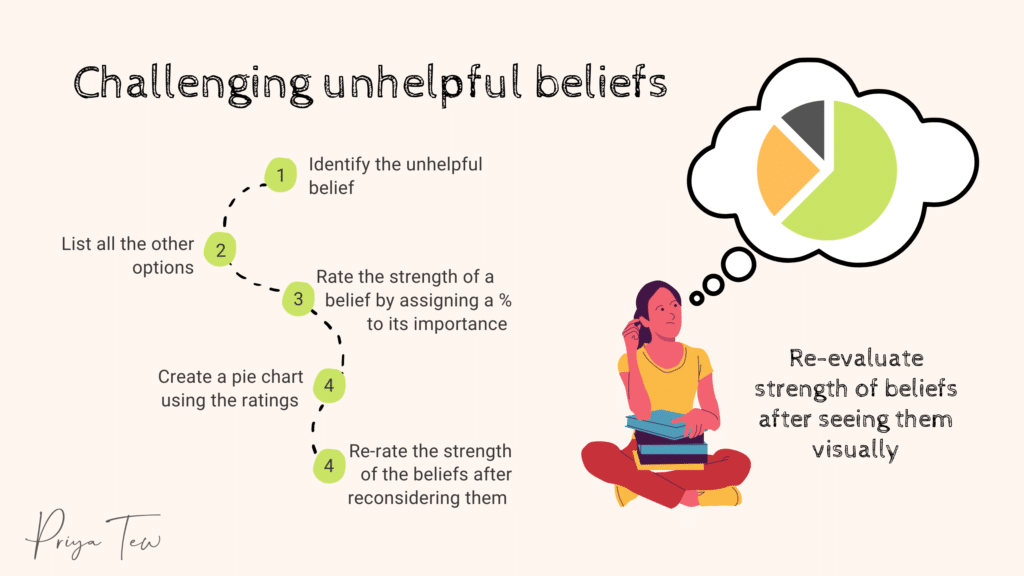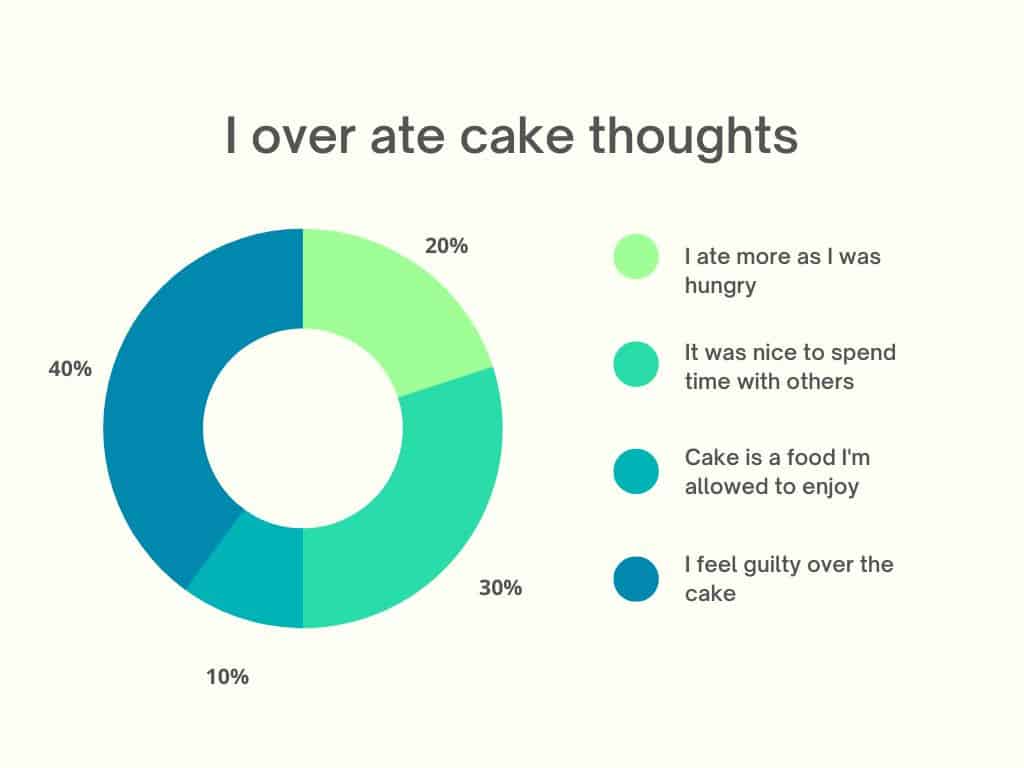Challenging unhelpful thinking styles around food.
Sometimes we all have unhelpful thoughts and in eating disorder recovery these can often be related to food. Noting these down and also being aware that your unhelpful thinking styles may be due to your stage of recovery (rather than being who you are as a person) can help you identify where to start working next. Let’s have a look at how to identify and challenge these negative thinking styles and unhelpful thinking patters.
Types of unhelpful thinking patterns include:
Black and White Thinking: you can only see extremes, so food is good or bad, you are wrong or right. There is no middle ground.
Mental Filter: Being unable to enjoy a situation as you can only focus on one negative aspect, maybe you are worried about something you ate and this then stops you enjoying the whole day out.
Should/Must Rules: Having strict rules that you then end up breaking, for example I shoudl never eat cake unless it is my birthday. When you do then have a piece, it becomes a big issue as you broke the rule.
Jumping to Conclusions without Evidence: It can be very easy to jump to conclusions without having all the facts and evidence. For example, if I eat that cake I will put on weight. Yet how do you know that? Your body needs nourishment and cake can be a part of a balanced eating plan. This does not have to lead to weight gain.
Personalisation and Blaming: “It is all my fault, I am totally to blame for eating the cake and for my eating disorder”. Are you really 100% responsible? Or do other external events and influences play a role?
Catastrophising : viewing the scenario as the worst it could ever be and blowing things out of proportion. “Now that I have eaten the cake I have blown it, I am a failure and there is no point focusing on recovery anymore”
How to challenge unhelpful thinking styles using the pie chart technique:
Approaching difficult food thoughts in a visual way can be helpful to reevaluate them. The pie chart technique comes from cognitive behavioural therapy. This method has you write down your thoughts before visualising them, which in itself can be helpful.

Let’s work through the stages:
- Try to identify the automatic thought that you have around a challenging situation around food, such as “I feel guilty for eating that cake, I have no will power”. This thought may seem pretty strong and overpowering at the time.
- List all the other options and thoughts that you could have -e.g. “I enjoyed that cake” “I ate slightly more than normal as I was hungry, and that’s okay” “Cake is a food and all foods are allowed in my diet” “Cake is a fun food and today was a time I chose to have fun” “One slice of cake will not harm me” or “it was nice to spend time with my friends over cake today”. Try to come up with as many alternatives as you can even if they seem silly at the time.
- Assign a percentage value to these thoughts based on how influential they feel to you or how likely that are to be true. For example, if you were hungrier than usual before eating the cake, you might give it a higher percentage – remember to make make sure that they add up to 100% eg:
- I ate more as I was hungry = 20%
- It was nice to spend time with others = 30%
- Cake is a food I’m allowed to enjoy and it will not harm me = 10%
- I feel guilty over the cake = 40%
- Using these percentages, create a pie chart. Do the proportions feel accurate now that you’ve seen them in real life?
- Re-rate the strength of these beliefs after seeing them visually.

Hopefully seeing it drawn out will help you to rethink your thoughts, can you see how eating cake can bring some positives? Can you focus more on those thoughts?
Try the pie chart technique to identify the most likely scenario for your thoughts and behaviours to reduce the power that challenge automatic unhelpful beliefs may have. The more you use this technique, the more you will be able to override unhelpful automatic thoughts.
Pingback: Atypical anorexia – what is it? – Doctor Says Book
Pingback: Atypical anorexia – what is it? – Health Exercise Book